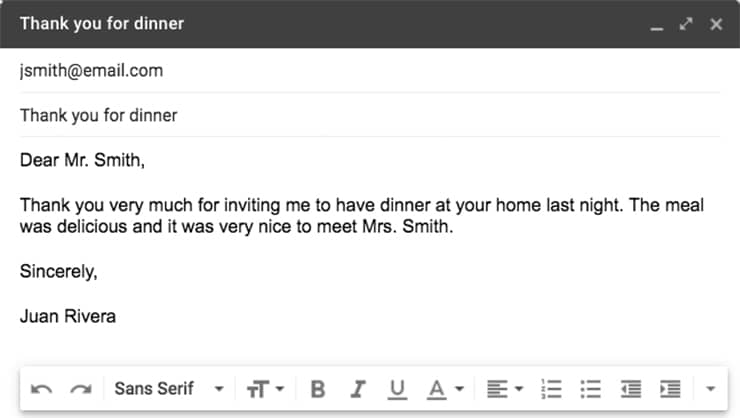Nowadays, it isn’t easy to imagine a world where technology and connectivity don’t play an integral part in our lives. We can talk to our appliances, get just about anything delivered to our doorsteps in a matter of days, and have all of our questions answered immediately by asking our phones.

Of course, it wasn’t always like this. Growing up in the eighties and nineties, I can remember sifting through volumes and volumes of encyclopedias to find possibly outdated information on any given topic. As a child, our family had a single phone, which was tethered to the wall, and television had to be watched live, not live-streamed.
But as a teenager and young adult, I embraced exciting new technologies as they became available (and when I could afford them). I am a Xennial, and my superpower is bridging the generational gap such accelerated technological advancement has created. And a significant part of that gap is seen in how we communicate. So let’s break it down.
Baby Boomers
Born during the population explosion that occurred when American troops returned home from the battlefields of the Second World War (roughly 1946-1964). They are now in their 60s and 70s, and many are still active in the workforce.
Generation X
Born between 1965 and 1980. The letter “X” is actually the Roman numeral ten, as it was estimated the people born during this period were more or less the tenth generation born after American independence in 1776.
Millennials
Born between 1981 and 1996, this is the first generation to grow up surrounded by technology like computers, mobile phones, and gaming consoles. Those who experienced the dawning of the new millennium (Y2K, as we called it then) during their formative years.
GenZ
Or Zoomers, as some have begun to call you. Your generation – born between 1996 and 2012 – has grown up wholly immersed in access to more advanced technology and connectivity. Because of this connectivity and ability to share ideas across cultures, GenZ is not a uniquely American generation. Most InterExchange participants currently fall into this group.
As I mentioned, I consider myself a Xennial – which may or may not be a real thing – and is theorized to be a “microgeneration” that maintains many GenX social values while embracing the same technology as the Millennials. I tell myself that this gives me a unique dual perspective of the world.
Now, with that background in mind, let’s talk about communication styles and how they differ. Note that these generalizations will not be true for everyone of a specific age.
Let’s start with the Baby Boomers. Compared to younger people today, they tend to be more formal in communicating – and expect the same in return. Although English doesn’t have formal and informal conjugations like some other languages, Baby Boomers expect your correspondence to be polite, using words like “sir,” “ma’am,” and “please,” and avoid the use of slang or profanity.
Although many have accounts on Facebook, they tend to view it as a place to connect with friends and family and not an appropriate place for work-related or other important conversations. A phone call is usually preferred over a text message. And while many use email, they expect thoughtful, prompt replies. The same goes for voicemail – don’t forget to set up your inbox and check messages regularly!

Much like the Baby Boomers, GenXers were late adopters of technology and had varying levels of comfort with it. Many have multiple social media accounts but still don’t consider it an appropriate place for professional conversations. They often have busy lives and prefer a text over a phone call. They may even prefer that you call them by their first names. If you’re not sure, ask. How do you prefer to be referred to? What’s the best way to contact you?
Most InterExchange host family parents and host employers pertain to Generation X or our next category: Millennials. Millennials still remember when MTV played music. They witnessed – and largely participated in – the explosion of the Internet, smart devices, and social networking. Millennials are more interested in to-the-point communication than pleasantries. Text messages are often the preferred form of communication, and voicemail is seen as a nuisance. They’ll often like to be on a first-name basis with their peers and younger people (and may even dislike being called sir or ma’am). Overall, Millennials are interested in efficiency and embrace new technology that makes work and life easier.
It’s worth noting that many Americans feel uncomfortable with silence in a group setting and make “small talk” – conversation about inconsequential topics like sports or weather – to eliminate the awkwardness. (This can be a great opportunity to practice your English skills and contribute to the flow of communication in the workplace.)
And now to the so-called Gen Z: I am writing this for you. You are already revolutionizing and will continue to mold the way humans communicate in the future. But the world isn’t yours just yet. It is important to be mindful of generational differences and how you connect with others – especially in a professional environment. Here are a few tips to ensure smooth communication across multiple generations:
- Write in complete sentences. It shows that you respect the person enough to devote a few extra keystrokes to your message.
- Use emojis sparingly. Sometimes, nuances like body language and intonation can be lost in an email or text message, and a single emoji might be appropriate to show the intention behind your message. Using them unnecessarily, however, might come across as unprofessional.
- Avoid using slang. Casual language–at least in English–evolves very quickly. These expressions can easily be misinterpreted.
- Use the proper channels. This may even mean talking on the phone. If you’re visiting the USA, remember that messaging apps like WhatsApp and Telegram are less common here as there is wider adoption of Apple’s iPhone and Messages app. Ask your employer, colleagues, or host family about communication expectations.
- Understand nonverbal communication. Body language plays a big role in how your attitude is perceived. Be careful not to look standoffish, insecure, or uninterested in conversation.
- Be mindful of your online presence. For most Baby Boomers and GenXers, privacy is highly valued. If you’re “oversharing” on Instagram, they may question your seriousness about things like work and education.
Of course, this is merely scratching the surface of the very complex and nuanced layers of communication. In closing, I leave you with three universal truths: good posture goes a long way, eye contact is vital, and, when in doubt, send an email.
What to learn more about different generations in American culture? Check out this short video by Ryan Jenkins:




